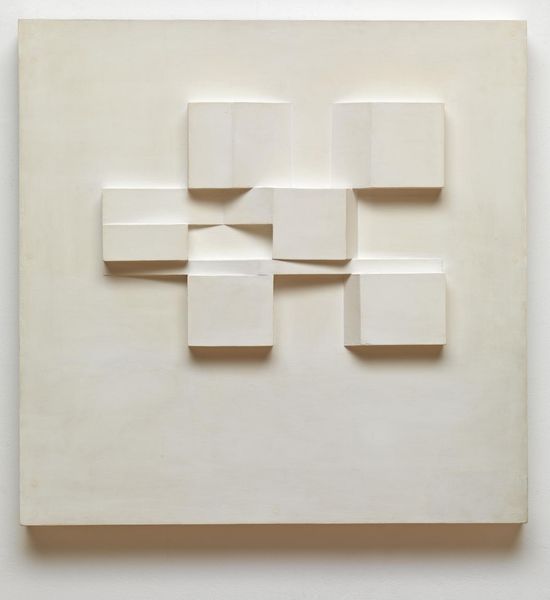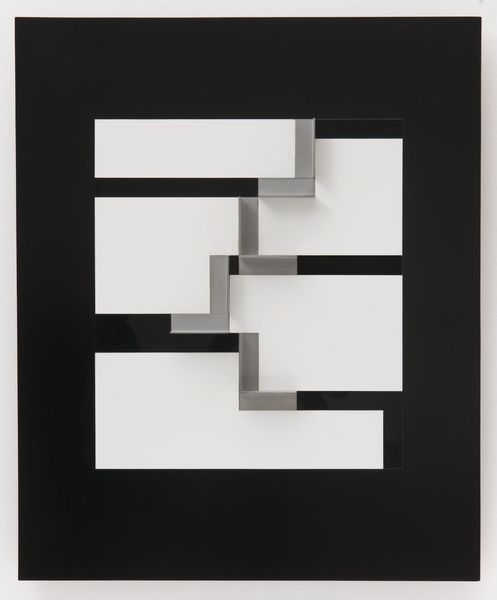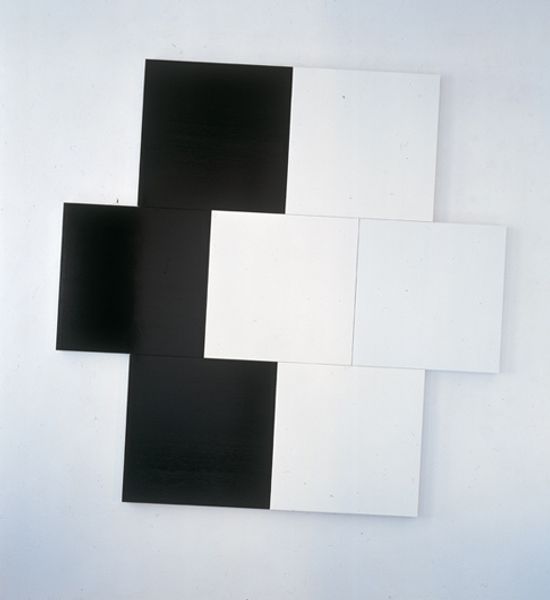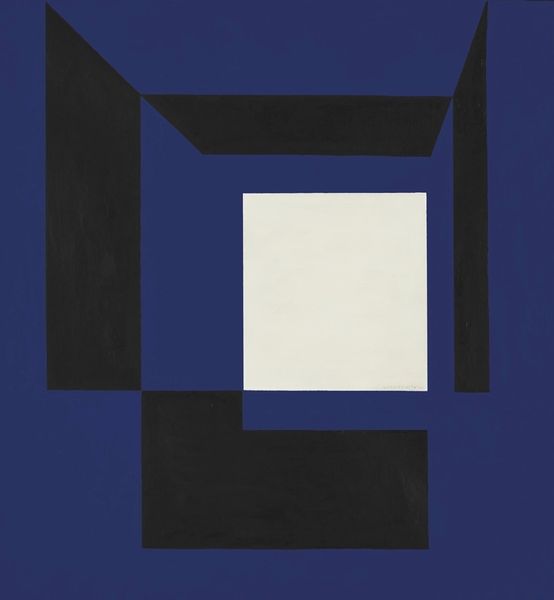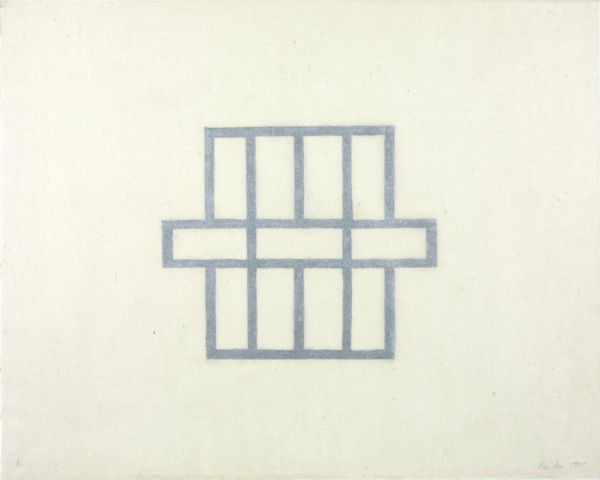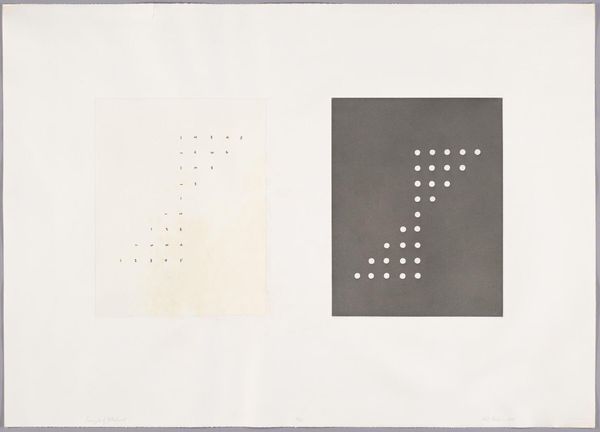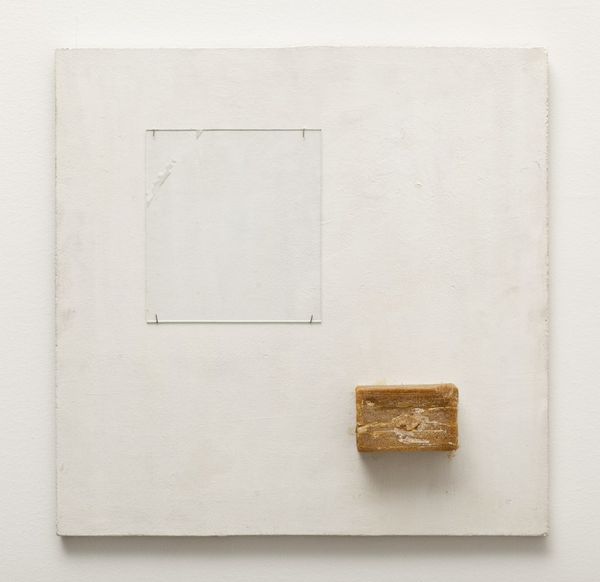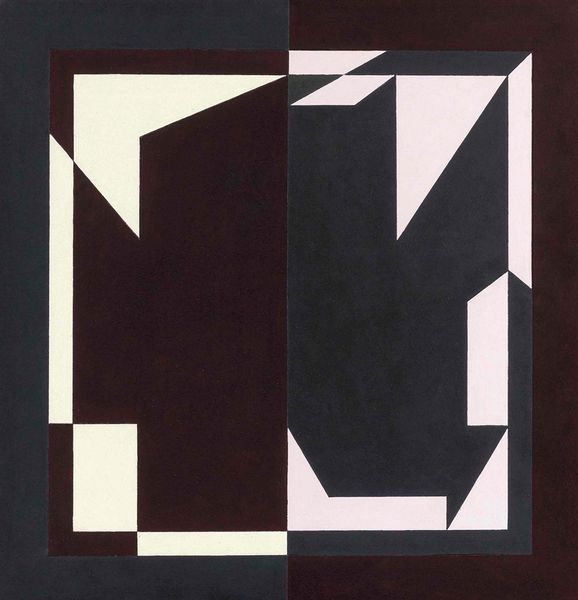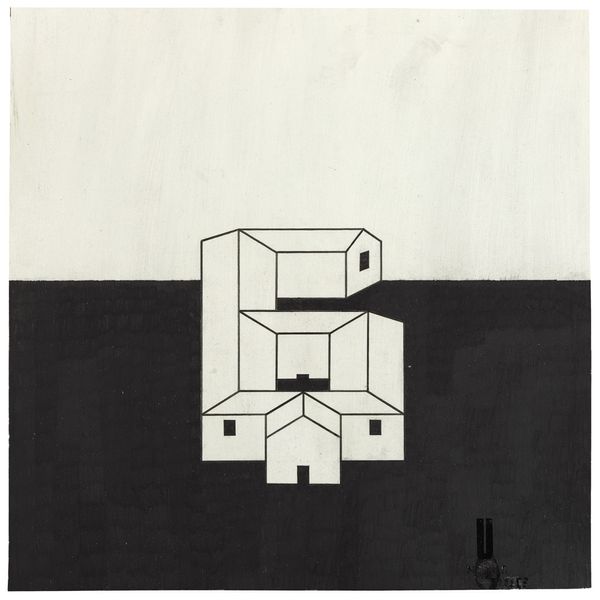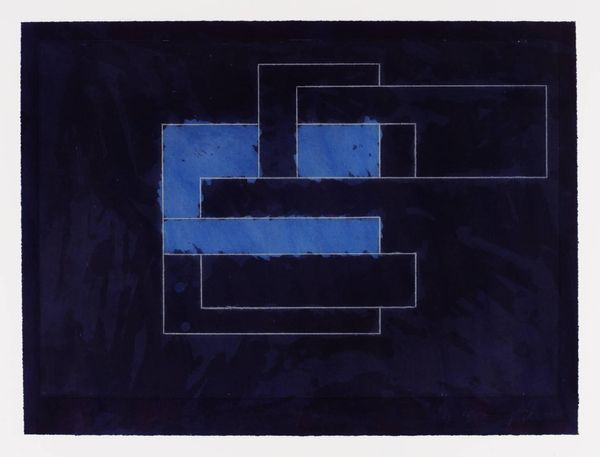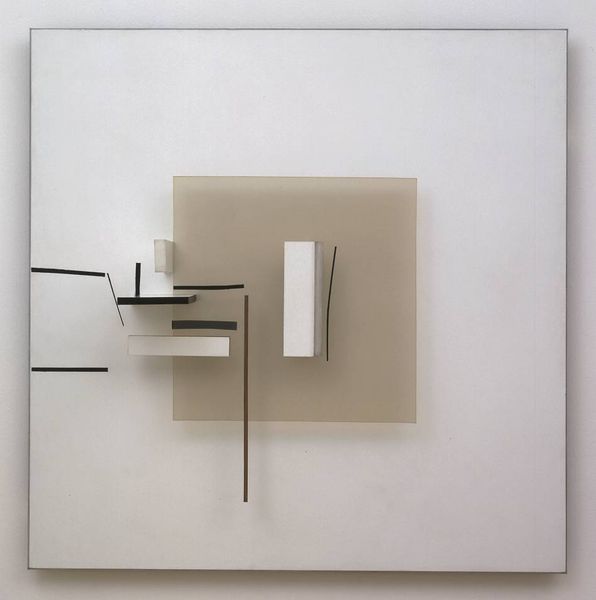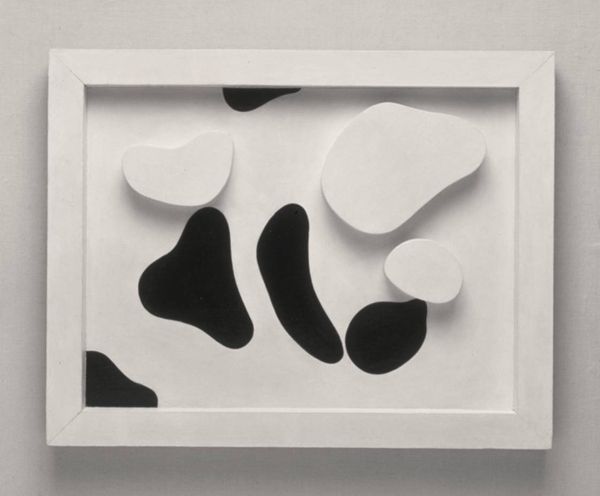
Dimensions: object: 457 x 457 x 95 mm
Copyright: © The estate of Mary Martin | CC-BY-NC-ND 4.0 DEED, Photo: Tate
Curator: Mary Martin’s "Spiral Movement," held here at the Tate, presents a fascinating exploration of form and dimension, doesn't it? Editor: Absolutely. My first impression is... restrained energy. It's all white, quite minimal, yet those little blocks feel like they're about to burst outwards. Curator: The white speaks to a kind of purity of vision, doesn't it? And the spiral motif itself is ancient, symbolizing growth, evolution, the unfolding of consciousness. It's a potent symbol. Editor: Yes, and I'm also thinking of architectural models, a city in miniature…Or perhaps a puzzle, these repeated squares suggesting modules within modules, parts of a whole. Curator: That makes me think of the subtle play of light and shadow. Martin's created depth using such a limited palette. Editor: And that’s the magic, isn’t it? To do so much with so little. It’s like a quiet meditation, but one that invites you to reach out and touch, to rearrange the pieces. Curator: I think that’s right. The geometry invites a sense of order, but it is belied by the implied movement. Editor: The sculpture asks us to ponder balance, and that quiet disruption is part of its enduring appeal.
Comments
Join the conversation
Join millions of artists and users on Artera today and experience the ultimate creative platform.
tate 7 months ago
⋮
Martin said that abstract painting had led to a desire to use three-dimensional materials. This work follows a strict mathematical rule, the Golden Section. It dictates the size of different elements, with the aim of creating the perfect composition. Writing about this work, Martin explained, 'I took a simple element (in this case a parallelepiped – a solid figure whose faces are six parallelograms) and subjected it to a system of changes, not knowing what would happen to it…. I think all my work has been based on this kind of curiosity.' Gallery label, August 2020
